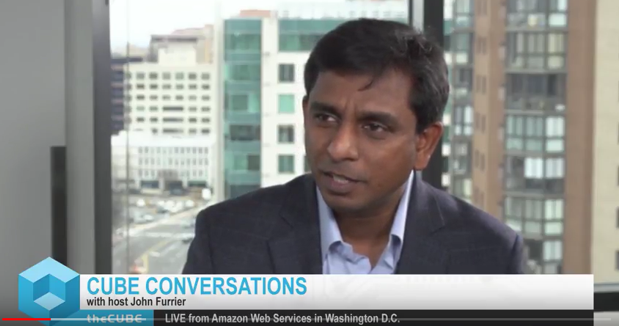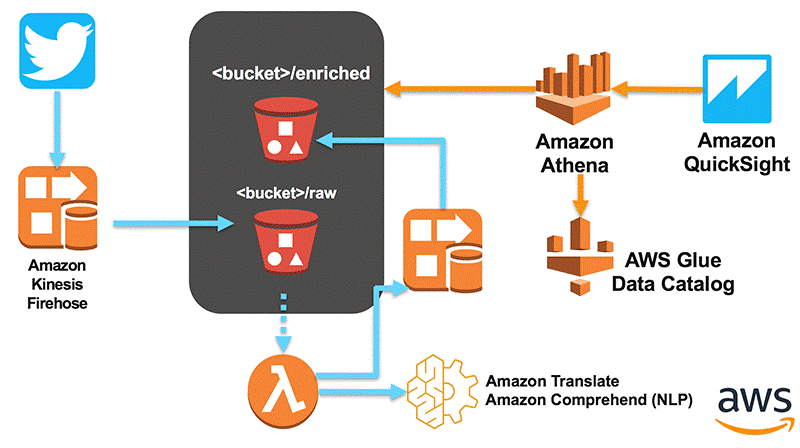AWS Public Sector Blog
Category: Government
What Would You Do with $50,000 in AWS Promotional Credits?
The City on a Cloud Innovation Challenge is now open! The City on a Cloud Innovation Challenge is a global program recognizing how local and regional governments are innovating on behalf of their citizens around the globe. Last year, we opened up the competition to school districts who are using the cloud to enrich learning, help teachers reach more students, and improve school or district operations. This year, we are adding a new category to the Challenge: We Power Tech.
AWS GovCloud (US) Region Adds Third Availability Zone
In order to provide our customers with additional flexibility to architect scalable, fault-tolerant, and highly available workloads in AWS GovCloud (US), we have added a third Availability Zone (AZ) to the AWS GovCloud (US) Region, Amazon’s isolated cloud region designed to host sensitive data and regulated workloads that address the most stringent U.S. government security and compliance requirements.
Defense Agencies Can Access AWS Secret Region for IL6 Workloads
In November, with the launch of the AWS Secret Region, we achieved a Provisional Authorization (PA) for Impact Level 6 (IL6) workloads from the U.S. Defense Information Systems Agency (DISA), the IT combat support organization of the U.S. Department of Defense (DoD). The PA was recently updated to add 11 new AWS services. A service catalog for the Region is available through your AWS Account Executive.
Back to Basics: Cloud 101 for Government
Government organizations use Amazon Web Services (AWS) to address their unique challenges, requirements, and missions. We listen to our customers then innovate and deliver technology that helps them solve problems faster, adapt to changing environments, deal with sudden demand, and adhere to the highest security standards. With AWS, government organizations can rapidly prototype, trying several architectures in parallel, allowing them to more quickly evaluate their options and move to full deployment for new programs and systems.
Quickly Achieve Full IT Operations in the Cloud
With defense agencies looking to quickly migrate legacy applications to a government-approved, commercial cloud environment of their choice, the Department of Defense (DoD) has entered into an agreement with REAN Cloud to provide a new streamlined and consultative process to procure cloud solutions.
Amazon Polly is Now Available in AWS GovCloud (US) Region
Amazon Polly, a Text-to-Speech service, is now available in the AWS GovCloud (US) Region, Amazon’s isolated cloud region built for sensitive data and regulated workloads. Powered by advanced deep learning technologies, Amazon Polly is a service that turns text into lifelike speech. With dozens of natural sounding male and female voices across a wide variety […]
Open Data, Data Analytics, and Artificial Intelligence: How the Cloud is Taking on the Opioid Epidemic
The recent Winter Innovation Summit in Salt Lake City, Utah, showcased a breakthrough Sundance documentary, Dying in Vein. Its filmmaker, Jenny Mackenzie, joined a panel of public health and technology leaders, including Dr. Bill Hazel, former Secretary of Health and Human Resources for the Commonwealth of Virginia, and Alex Chan, CEO of the Clinton Foundation Health Initiative, to discuss opiate and heroin addiction, which, as the film highlights, claims an average of 90 lives in the U.S. daily. A prevailing theme that emerged cast the opioid epidemic as an issue of public health – rather than one of criminal justice – and pressed the role of technology in mitigating its risks.
70 Datasets Inspire Winning Ideas to Tackle Opioid Crisis
When the team at the U.S. Department of Health and Human Services wanted help addressing the nation’s opioid epidemic, they decided to do something simple – invite in the country’s brightest minds and give them API-enabled, up-to-date data.
Listen to Citizen and Student Sentiment with Machine Learning
Twitter has hundreds of millions of active users each month and supports multiple languages on their platform. These users engage with nonprofits, need citizen services, and learn at schools, universities, and other educational institutions. As a consequence, public sector organizations look to social media not only to communicate with the public, but also to gain insights about the citizens, volunteers, and students they serve. Wouldn’t it be great to know if people had positive or negative opinions about your city, school, nonprofit, or organization? What are they talking about and how many other people share that view?
AWS media services powering the DoD
For soldiers in remote or “disconnected” environments, video content must be delivered securely and it must be tailored based on roles, missions, and other factors. Previously, troops stationed around the world would struggle with distribution and network connectivity challenges that prevented them from accessing military command videos, training videos, entertainment, or even the ability to call home. With the launch of AWS Media Services, government and military agencies can bring connectivity to the edge.









